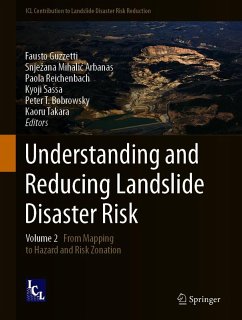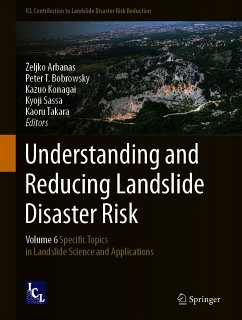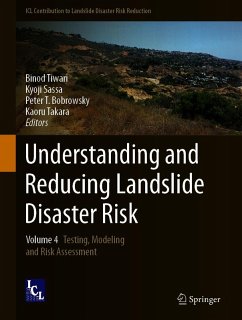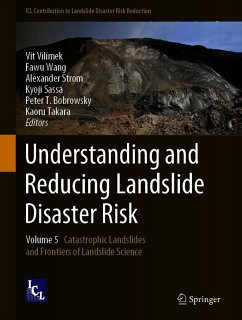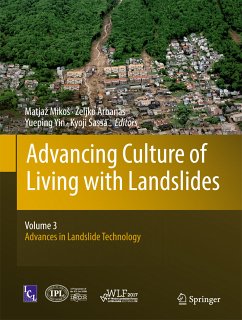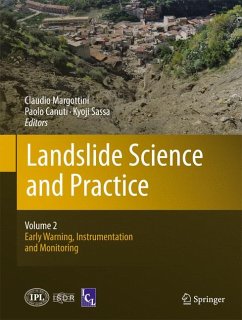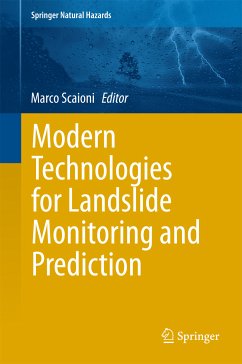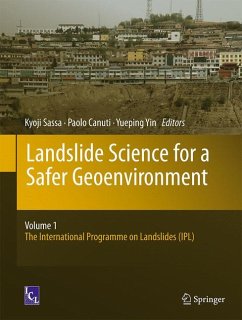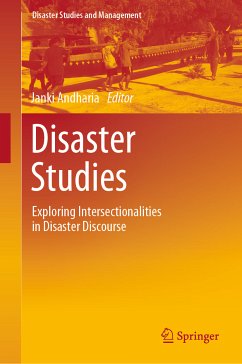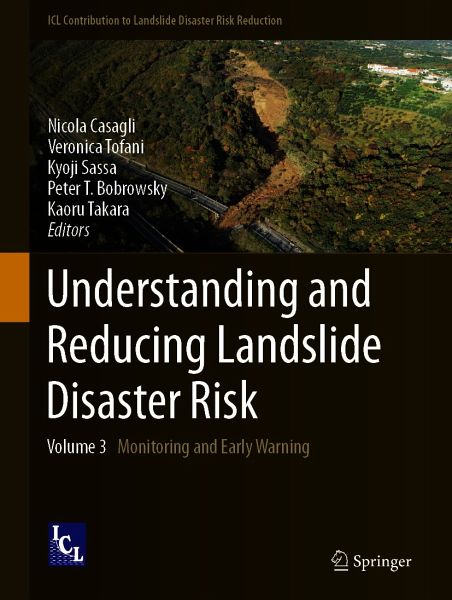
Understanding and Reducing Landslide Disaster Risk (eBook, PDF)
Volume 3 Monitoring and Early Warning
Redaktion: Casagli, Nicola; Takara, Kaoru; Bobrowsky, Peter T.; Sassa, Kyoji; Tofani, Veronica
Versandkostenfrei!
Sofort per Download lieferbar
120,95 €
inkl. MwSt.
Weitere Ausgaben:

PAYBACK Punkte
60 °P sammeln!
This book is a part of ICL new book series "ICL Contribution to Landslide Disaster Risk Reduction" founded in 2019. Peer-reviewed papers submitted to the Fifth World Landslide Forum were published in six volumes of this book series. This book contains the followings: .One theme lecture and one keynote lecture.Monitoring and remote sensing for landslide risk mitigation, including one keynote lecture.Landslide early warning systems, forecasting models and time prediction of landslides Prof. Nicola Casagli is a Vice President and President-elect of the International Consortium on Landslides (ICL...
This book is a part of ICL new book series "ICL Contribution to Landslide Disaster Risk Reduction" founded in 2019. Peer-reviewed papers submitted to the Fifth World Landslide Forum were published in six volumes of this book series. This book contains the followings:
.One theme lecture and one keynote lecture
.Monitoring and remote sensing for landslide risk mitigation, including one keynote lecture
.Landslide early warning systems, forecasting models and time prediction of landslides Prof. Nicola Casagli is a Vice President and President-elect of the International Consortium on Landslides (ICL) for 2021-2023. He is Professor of engineering geology at the Department of Earth Sciences, University of Florence, and President of the National Institute of Oceanography and Applied Geophysics - OGS, Trieste, Italy.
Dr. Veronica Tofani is an Associate Professor at the Department of Earth Sciences, University of Florence, and Program Coordinator of the UNESCO Chair on Prevention and Sustainable Management of Geo-hydrological hazards, University of Florence.
Prof. Kyoji Sassa is the Founding President and the Secretary-General of the International Consortium on Landslides (ICL). He has been the Editor-in-Chief of International Journal Landslides since its foundation in 2004.
Prof. Peter Bobrowsky is the President of the International Consortium on Landslides. He is a Senior Scientist of Geological Survey of Canada, Ottawa, Canada.
Prof. Kaoru Takara is the Executive Director of the International Consortium on Landslides. He is a Professor and Dean of Graduate School of Advanced Integrated Studies (GSAIS) in Human Survivability (Shishu-Kan), Kyoto University.
Dieser Download kann aus rechtlichen Gründen nur mit Rechnungsadresse in A, B, BG, CY, CZ, D, DK, EW, E, FIN, F, GR, HR, H, IRL, I, LT, L, LR, M, NL, PL, P, R, S, SLO, SK ausgeliefert werden.



